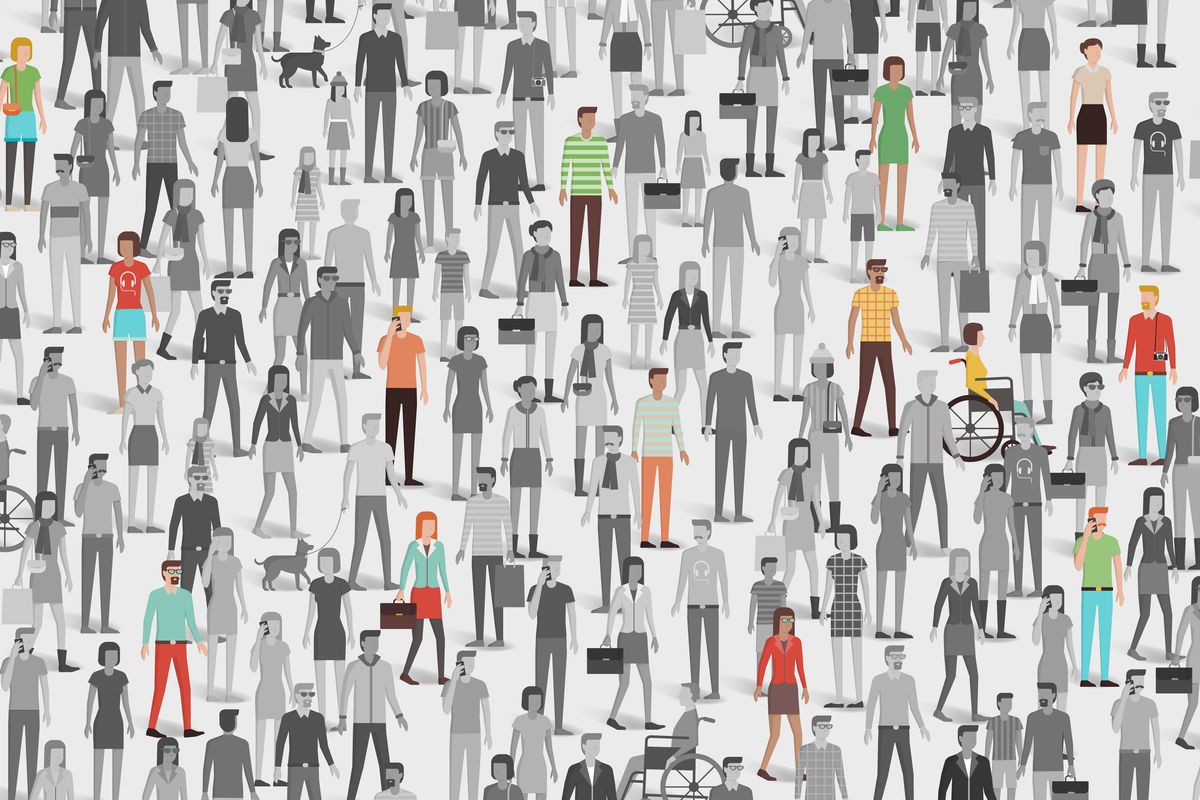Community Connection: How Social Wellness Shapes Our Lives
Understand social wellness
Social wellness represent our ability to form and maintain positive relationships with others. It encompasses the quality of our connections, our sense of belong within communities, and our capacity to navigate social environments efficaciously. When we achieve social wellness, we experience a support network that enhance our resilience, provide emotional stability, and contribute importantly to our overall health.
The concept extend beyond merely have friends. It involves develop meaningful relationships characterize by mutual respect, trust, and genuine care. These connections create a foundation for personal growth, emotional security, and collaborative problem solve that enrich our lives in countless ways.
The neighborhood block party: a social wellness showcase
Consider the scenario of a neighborhood block party — an excellent example of social wellness in action. In this setting, residents from diverse backgrounds come unitedly in a share space to connect, celebrate community, and strengthen bonds that might differently remain undeveloped.
Maria, a new resident who lately move to the neighborhood, initially feel isolated and disconnect. The annual block party provides her with a natural opportunity to meet neighbors in a relaxed, welcome environment. Through casual conversations over potluck dishes and group activities, sheformsm connections that rapidly transform strangers into friendly faces she straightawarecognizesze and greets regularly.
For the Rodriguez family, who had lived in the neighborhood for decades, the block party allow them to share their cultural traditions through food and music, createcross-culturall understanding and appreciation. Meantime, elderly residentMrr.Johnsonn find opportunities to share neighborhood history with younger residents, bridge generational gaps and foster a sense of continuity and heritage.
This gathering exemplify social wellness through several key elements:
- Inclusion and belong across diverse backgrounds
- Intergenerational connections
- Cultural exchange and appreciation
- Formation of support networks
- Strengthen of community identity
The science behind social wellness
Research systematically demonstrate the profound impact of social connections on our physical and mental health. Studies show that strong social ties correlate with lower rates of depression, reduce stress levels, and tied improve cardiovascular health. The mechanisms behind these benefits include:
Stress reduction
Positive social interactions trigger the release of oxytocin, oftentimes call the” bonding hormone, ” hich counteract the effects of stress hormones like cortisol. During the neighborhood block party, the laughter and casual conversations really create physiological changes that benefit participants’ health.
Emotional regulation
Social connections provide opportunities to process emotions through share experiences. When maria discuss her challenges adjust to a new community, she is not solitary receive practical advice but besides experience emotional validation that help her manage feelings of isolation.
Cognitive stimulation
Diverse social interactions challenge our thinking and expose us to new perspectives. The intergenerational exchanges at the block party stimulate cognitive flexibility and learning for all involve, contribute to mental sharpness especially valuable for older adults like Mr. Johnson.
Elements of social wellness in community gatherings
Create inclusive spaces
Successful community events prioritize accessibility and welcome participants from all backgrounds. The block party organizers ensure this by:
- Host in a central, accessible location
- Provide activities appropriate for various ages and abilities
- Encourage multicultural food contributions
- Use inclusive language in invitations
These considerations create an environment where everyone feels value and represent, essential components of social wellness.
Facilitate meaningful connections
Beyond physical gathering, the block party designedly foster relationship building through structured and unstructured interactions:

Source: dtownwellness.weebly.com
- Icebreaker activities that help newcomers integrate
- Share tasks like setup and cleanup that create natural collaboration
- Designate areas for different interaction styles (quiet conversation spaces alongside more energetic activity zones )
These elements acknowledge that meaningful connections require both opportunity and appropriate context to develop.
Build continuity
Social wellness thrive on ongoing connection kinda than isolated events. The neighborhood maintain momentum by:
- Create a neighborhood directory share with willing participants
- Establish smaller interest groups that meet between major gatherings
- Utilize digital platforms to maintain communication
This continuity transform one time interactions into last relationships that provide sustained support.
Social wellness beyond organized events
While the block party scenario provide a clear example of social wellness in action, similar principles apply across various contexts in daily life:
Workplace connections
Organizations that prioritize social wellness create environments where colleagues develop supportive relationships beyond mere professional courtesy. This might include:
- Collaborative projects that build trust through share goals
- Recognition practices that celebrate individual and team contributions
- Informal gathering spaces that facilitate spontaneous interaction
These elements contribute to workplace satisfaction and productivity while support individual social wellness.
Digital community building
In our progressively connected world, social wellness extend to online interactions. Healthy digital communities feature:
- Clear communication norms that promote respect
- Opportunities for meaningful exchange beyond surface level interaction
- Balance between digital connection and in person engagement
These principles help transform digital spaces from potential sources of isolation into extensions of our social support networks.
Family systems
Perchance our virtually fundamental social unit, families demonstrate social wellness through:
- Regular rituals and traditions that strengthen bonds
- Communication patterns that validate individual experiences
- Flexibility to adapt to change needs and circumstances
These qualities create a foundation of social support that oftentimes extend to other relationships.
Barriers to social wellness
Understand obstacles to social wellness help us address them efficaciously. Common barriers include:
Time constraints
Modern schedules oftentimes leave little room for relationship building. Many neighborhood residents initially hesitate to attend the block party due to compete commitments. Overcome this barrier require intentional prioritization of social connection despite busy schedules.
Social anxiety
For some individuals, social interactions trigger significant anxiety. Maria experience this when consider attend the block party as a newcomer. Successful social wellness initiatives recognize this challenge and create low pressure entry points for participation.
Cultural and language differences
Diverse communities face unique challenges in build connection across differences. The Rodriguez family initially worry about language barriers limit their participation. Effective social wellness approach acknowledge these differences and create bridges through share experiences that transcend verbal communication.
Build your social wellness practice
Draw inspiration from the neighborhood block party scenario, consider these strategies for enhancing your own social wellness:
Assess your current social connections
Take inventory of your exist relationships. Consider:

Source: collidu.com
- Which relationships energize you versus deplete your resources?
- Where do you find genuine support and understanding?
- What types of connection might be miss from your social landscape?
This assessment provide direction for intentional relationship development.
Practice active engagement
Social wellness require participation instead than passive presence. Develop habits that foster meaningful connection:
- Practice active listening without plan your response
- Ask open end questions that invite deeper sharing
- Follow up on previous conversations to demonstrate care and attention
These practices transform superficial interactions into opportunities for genuine connection.
Expand your community involvement
Like maria at the block party, consider step into new social contexts:
- Identify community groups align with your interests or values
- Volunteer for causes that matter to you, create connection through share purpose
- Participate in local events that bring diverse community members unitedly
These activities create natural contexts for relationship development while contribute to community well bee.
Nurture exist relationships
Build social wellness involve deepen current connections amp intimately as form new ones:
- Schedule regular check ins with important people in your life
- Create traditions or rituals that provide consistent connection
- Express appreciation specifically and regularly
These practices strengthen your foundation of social support.
Social wellness across life stages
Our social needs evolve throughout life, require different approaches at various stages:
Childhood and adolescence
Young people develop social skills through structured and unstructured interaction. Parents and educators support this development by:
- Model healthy relationship patterns
- Create opportunities for cooperative play and collaboration
- Teach conflict resolution skills
These foundations establish patterns that influence lifelong social wellness.
Early and middle adulthood
This period oftentimes involves balance relationship development with career and family responsibilities. Strategies include:
- Integrate social connection into exist commitments
- Maintain friendships through life transitions
- Build community through share life stages
These approaches help prevent isolation during specially busy life phases.
Older adulthood
Former life oftentimes bring significant relationship changes through retirement, relocation, or loss. Like Mr. Johnson at the block party, older adults maintain social wellness by:
- Adapt to change social roles
- Develop intergenerational connections
- Create new relationships while honor past ones
These strategies support continue social engagement throughout the lifespan.
The ripple effect of social wellness
The impact of social wellness extends beyond individualwell beee to influence broader community health. When neighbors connect at events like the block party, they create:
Increased community resilience
Connected communities respond more efficaciously to challenges. After build relationships at the block party, residents more pronto share resources during power outages, assist with childcare in emergencies, and coordinate responses to neighborhood concerns.
Enhanced safety and security
Neighbors who know each other course create informal surveillance and support systems. The relationships form during community gatherings translate into increase awareness of typical patterns, make it easier to notice and respond to unusual situations.
Improved civic engagement
Social connections oftentimes lead to increase investment in community well bee. Block party participants often transition to involvement in neighborhood associations, local government, and community improvement initiatives.
Conclusion: create your social wellness scenario
The neighborhood block party represents equitable one example of social wellness in action. Each person create their own social wellness scenario through intentional connection, community engagement, and relationship development. By recognize the value of these connections and actively cultivate them, we build support networks that enhance our resilience, contribute to our health, and enrich our daily experience.
Whether through organized community events, workplace relationships, family connections, or friendship circles, social wellness remain a fundamental component of overall wellbeing. The time and energy invest in build these connections yield returns that benefit not lonesome individuals but entire communities, create a positive cycle of support, belong, and collective thriving.



